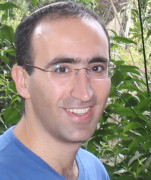MedicalResearch.com Interview with:
Christopher M. Jones, Pharm D., M.P.H
Senior advisor, Office of Public Health Strategy and Analysis
Office of the Commissioner, Food and Drug Administration
Medical Research: What is the background for this study?
Dr. Jones: Opioid analgesics and benzodiazepines are the two most common drug classes involved in prescription drug overdose deaths. In 2010, 75% of prescription drug overdose deaths involved opioid analgesics and 29% involved benzodiazepines. Opioid analgesics and benzodiazepines are also the most common drugs associated with emergency department visits due to nonmedical use of prescription drugs.
Combined opioid and benzodiazepine use has been suggested as a risk factor for overdose death.
Opioids and benzodiazepines have complex drug interactions and in combination can result in synergistic respiratory depression, but the exact mechanisms by which benzodiazepines worsen opioid-related respiratory depression are not fully understood.
Widespread co-use of
benzodiazepines and opioids has been documented in both chronic pain and addiction treatment settings. Studies suggest that among patients who receive long-term opioids for chronic non-cancer pain, 40% or more also use benzodiazepines. Among patients who abuse opioids, benzodiazepine abuse also is prevalent, and co-users report using benzodiazepines to enhance opioid intoxication.
This study builds on the prior literature by analyzing trends on how the combined use of opioids and benzodiazepines in the U.S. contributes to the serious adverse outcomes of nonmedical use–related ED visits and drug overdose deaths. A better understanding of the consequences of co-use of these medications will help identify at-risk populations, inform prevention efforts, and improve the risk–benefit balance of these medications.
Medical Research: What are the main findings?
Dr. Jones: From 2004 to 2011, the rate of nonmedical use–related Emergency Department visits involving both opioid analgesics and benzodiazepines increased from 11.0 to 34.2 per 100,000 population. During the same period, drug overdose deaths involving both drugs increased from 0.6 to 1.7 per 100,000. Statistically significant increases in
Emergency Department visits occurred among males and females, non-Hispanic whites, non-Hispanic blacks, and Hispanics, and all age groups except 12–17-year-olds. For overdose deaths, statistically significant increases were seen in males and female, all three race/ethnicity groups, and all age groups except 12–17-year-olds. Benzodiazepine involvement in opioid analgesic overdose deaths increased each year, increasing from 18% of opioid analgesic overdose deaths in 2004 to 31% in 2011.
(more…)




















